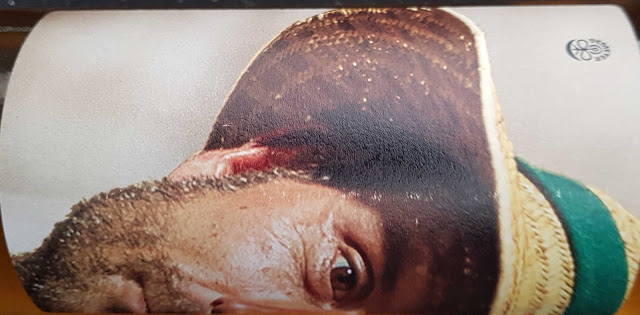A Couple of Highly Recommended Organic Wines
From Bergerac and Campobasso
Tour Des Gendres Cantalouette Bergerac Rouge (AC) 2020 14.5%
€19.45 64 Wine Dublin, Bradley’s of Cork, Greenman Dublin, Le Caveau Kilkenny
This is a blend of 50% Merlot, 25% Cabernet Franc, 25% Malbec. Not too sure about the name, though there is a bird (not like any lark I’ve ever seen!) on the label, and there is a town of this name about 30 minutes from Ribagnac where Tour des Gendres is based.
Very glossy and deep red in the glass. The nose is intense, a bouquet of vibrant small red fruits. And the fresh fruit flavours are also intense, juicy cassis and other darker fruits, a touch of moderate spice too. Tannins have a tender grip and this is an easy-drinking soft and balanced wine with good length. Really gorgeous, well made (typical of Tours des Gendres) and Very Highly Recommended.
The grapes come from the Tour des Gendres’ organic certified vineyards. The grapes are Malbec, Merlot and Cabernet Franc (noted for its quality of freshness), grown on a mix of sand, clay and limestone soils. Luc is looking for purity and intensity in his wines, relentlessly searching to reach the maximum potential of each vintage.Viticulture is organic and biodymanic and yields are low.
Le Caveau tells that Luc de Conti is a wonderful character and one of the finest wine-makers of his generation, he feels passionately for his wines, his 54-ha vineyard and his Bergerac region.”Luc is looking for purity and intensity in his wines, relentlessly searching to reach the maximum potential of each vintage.”
Over the years Bergerac winemakers have been overshadowed by those of neighbour Bordeaux who historically controlled the ports and so the exports. As Robert Joseph said a good few years back: The second class status of Bergerac today owes more to the efforts of Bordeaux merchants to discriminate against it than to the quality of its wines.
As a result, to this day, Bergerac doesn't command the same price level as Bordeaux. So watch out for Bergerac reds (and the whites also) and you should save yourself a few euro without sacrificing quality.
Fattoria di Vaira Vincenzo Bianco 2020, 11% abv
€18.45 64 Wine Dublin, Bradley’s of Cork, Greenman Dublin, Le Caveau Kilkenny
This white blend comes from southern Italy (not from the deep south); inland Campobasso, where the vineyard is located, is roughly equidistant from Rome and Bari but nearer the Adriatic then the Tyrrhenian.
Colour is an orange/gold, a haze cloud in the glass. Aromas offer quince and sweet peach notes, along with floral hints. The complex palate is full of lively fruit flavours (apricot, peach, even apple). Mouthfeel is a little tingly. Fresh and well structured, this is a delicious wine and an excellent introduction to the style of skin-contact white (also known as orange wines). Highly Recommended.
The blend sees light skin-contact Fiano grapes in with some direct press Trebbiano. The fruit for the Vincenzo wine is sourced from Fattoria di Vaira, one of the largest biodynamic farms in Italy, with more than 500 hectares, just 40 of which are planted to vines.
There is a wonderful diversity here, a very clean environment, with animals, fruit plants, cereals. Shepherds, farmers, cheese makers, vignerons all work in harmony on the farm.
You can visit if you are in the area. Not alone visit, stay as well. And you’ll be well entertained with wine tours and evenings of wine, food and music. Check it all out here.






